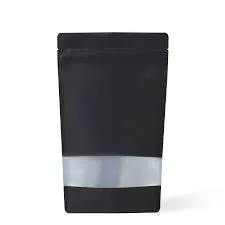- Afrikaans
- Albanian
- Amharic
- Arabic
- Armenian
- Azerbaijani
- Basque
- Belarusian
- Bengali
- Bosnian
- Bulgarian
- Catalan
- Cebuano
- chinese_simplified
- chinese_traditional
- Corsican
- Croatian
- Czech
- Danish
- Dutch
- English
- Esperanto
- Estonian
- Finnish
- French
- Frisian
- Galician
- Georgian
- German
- Greek
- Gujarati
- haitian_creole
- hausa
- hawaiian
- Hebrew
- Hindi
- Miao
- Hungarian
- Icelandic
- igbo
- Indonesian
- irish
- Italian
- Japanese
- Javanese
- Kannada
- kazakh
- Khmer
- Rwandese
- Korean
- Kurdish
- Kyrgyz
- Lao
- Latin
- Latvian
- Lithuanian
- Luxembourgish
- Macedonian
- Malgashi
- Malay
- Malayalam
- Maltese
- Maori
- Marathi
- Mongolian
- Myanmar
- Nepali
- Norwegian
- Norwegian
- Occitan
- Pashto
- Persian
- Polish
- Portuguese
- Punjabi
- Romanian
- Russian
- Samoan
- scottish-gaelic
- Serbian
- Sesotho
- Shona
- Sindhi
- Sinhala
- Slovak
- Slovenian
- Somali
- Spanish
- Sundanese
- Swahili
- Swedish
- Tagalog
- Tajik
- Tamil
- Tatar
- Telugu
- Thai
- Turkish
- Turkmen
- Ukrainian
- Urdu
- Uighur
- Uzbek
- Vietnamese
- Welsh
- Bantu
- Yiddish
- Yoruba
- Zulu
popcorn packing
The Science and Art of Popcorn Packing
Popcorn is a beloved snack that has transcended generations. Whether enjoyed at a movie theater, during a family gathering, or simply as a late-night treat, it brings people together. However, as simple as popcorn may seem, there is a surprising level of complexity when it comes to its packing, especially in commercial settings. This article delves into the intricacies of popcorn packing, exploring its importance, methods, and its impact on consumer experience.
At its core, the primary purpose of popcorn packing is to ensure that the popped kernels remain fresh, flavorful, and intact. Once popcorn is popped, its shelf life can be quite short due to exposure to air, moisture, and light, which can lead to staleness or loss of flavor. Moreover, the packing process helps prevent damage to the delicate popped kernels—nobody enjoys finding crushed pieces in their bag of popcorn. Therefore, effective popcorn packing is crucial for maintaining quality and ensuring customer satisfaction.
A variety of materials can be used for popcorn packing, each with its unique advantages. The most common choices include plastic bags, cardboard containers, and even resealable pouches. Plastic bags, often used in retail settings, are lightweight and cost-effective. They provide a reasonable barrier against moisture and air, although they may not offer the best protection against light. Cardboard containers, often seen in theaters, are sturdy and provide a more nostalgic touch to the popcorn experience. They enhance the aesthetic appeal while also allowing for easy handling. On the other hand, resealable pouches are becoming increasingly popular for home use, as they provide convenience and help maintain freshness after opening.
popcorn packing

The packing process itself can involve various technologies and methods. For mass production, automated packing machines play a significant role. These machines can efficiently fill and seal bags or containers, ensuring consistency in portion sizes while reducing the chances of contamination. Some manufacturers even utilize nitrogen flushing, where nitrogen gas is used to displace oxygen within the packaging. This technique helps to preserve the popcorn for a more extended period by preventing oxidation, thus maintaining its flavor and crunchiness.
Beyond preservation, the design of popcorn packaging also plays a critical role in marketing. Creative and eye-catching designs can greatly influence consumer purchases. Bright colors, fun graphics, and appealing images of fluffy popcorn can entice potential buyers. Moreover, clear labeling that highlights features such as organic, gluten-free, or non-GMO can attract health-conscious consumers. The challenge for manufacturers is to balance functionality with aesthetic appeal to create packaging that not only looks good but also protects the product effectively.
Sustainability is another vital aspect of popcorn packing that has gained traction in recent years. As consumers become more environmentally conscious, companies are exploring eco-friendly packaging options. Biodegradable materials, compostable bags, and recyclable containers are increasingly entering the market. By adopting sustainable practices, popcorn manufacturers can enhance their brand image and appeal to a growing demographic that prioritizes environmental responsibility.
In conclusion, while it may seem trivial, the intricacies of popcorn packing encompass a fascinating blend of science, design, and consumer psychology. From ensuring the freshness and quality of the popcorn to appealing to consumer preferences through marketing and sustainability, effective packing is essential in the popcorn industry. As the market continues to evolve, manufacturers will need to continually adapt and innovate in their packing methods to meet changing consumer demands and preferences. Ultimately, whether enjoyed at the movies or at home, the packing of popcorn is a critical element of the overall experience, ensuring that this beloved snack remains a staple in our lives.













